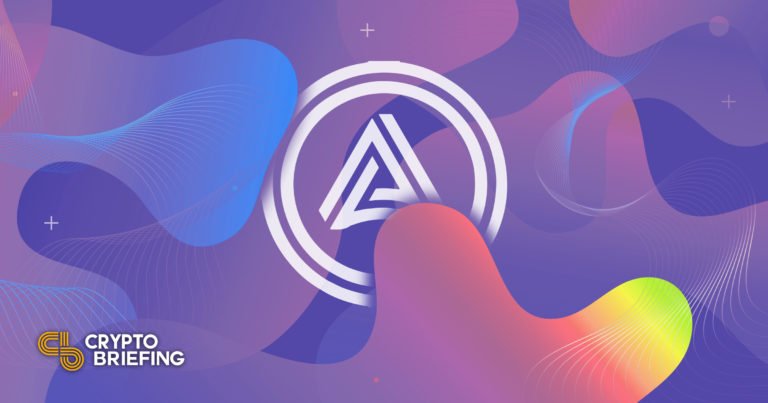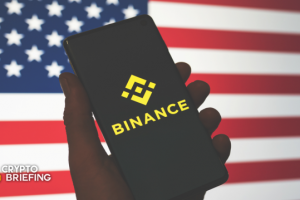
Key Takeaways
Acala is a cross-chain interoperable Polkadot parachain that’s aiming to become crypto’s leading DeFi hub.
Its ecosystem is centered around the decentralized, Maker-inspired, overcollateralized stablecoin, Acala Dollar.
Acala is built using Polkadot’s Substrate framework, meaning certain applications can be built into the chain instead of on top of it.
Share this article
Acala Network is an Ethereum-compatible Polkadot parachain aspiring to become an all-in-one DeFi hub for Web3. Its ecosystem is centered around the Acala Dollar (aUSD) stablecoin and hosts an array of financial applications, including a built-in decentralized exchange and a liquid staking service for native tokens of Proof-of-Stake based chains.
Acala Explained
Acala Network is a scalable, Ethereum-compatible DeFi-optimized platform natively interoperable with the entire Polkadot ecosystem.
To understand Acala’s value proposition, it’s worth highlighting that the project inherits most of its advantages over other Layer 1 protocols by virtue of being built on Polkadot using Substrate. The Polkadot network can be described as a scalable, heterogeneous, multi-chain ecosystem with a so-called bedrock “Relay Chain” at its center. Where most other Layer 1 blockchains are designed with varying degrees of generality concerning potential applications, the Polkadot Relay Chain has no inherent application functionality at all. Instead, it is an uncomplicated chain that serves as the foundational security layer for a network of interconnected, interoperable blockchains.
In other words, the Polkadot Relay Chain can be thought of as a Layer 0 framework that hosts and connects an expanding, parallelized network of either generalized or application-specific Layer 1 blockchains called parachains. These are modular and easily customizable independent blockchains that can have unique architectures, tokenomics, and governance structures. This is where Acala’s moat lies—it’s a scalable, high-throughput parachain that supports forkless upgradability and custom optimizations.
Source: Acala
While there are hundreds of DeFi applications on dozens of different Layer 1 chains, they’re all theoretically limited in their capabilities because they are hosted on generalized chains. In these cases, decentralized application developers must adapt to the constraints of their particular environments. If they’re building DeFi apps on Ethereum, for example, there are certain things that their protocols will and won’t be able to do because of how Ethereum is designed.
Acala turns this principle on its head. Instead of the applications adapting to the constraints of fixed, generalized blockchains, Acala can adapt to the needs of the applications by continually evolve to become more application-specific. Acala’s Chief Growth Officer Dan Reecer sat down with Crypto Briefing to discuss the project, and he explained how the network is geared toward DeFi. He said:
“Because Acala is built with Substrate, we’ve been able to build a chain that is optimized for decentralized finance. One of many things that this allows us to do, for example, is that users can pay fees on Acala in any token supported by the native, built-in decentralized exchange. Another unique thing is the on-chain transaction scheduling. This allows us to build native rails for automatic and recurring payments supporting subscription services, automatic profit-taking, reinvestment mechanisms, liquidation mechanisms not reliant on external keepers, and so on.”
The “Substrate” Reecer refers to is a framework developed by the company behind Polkadot, Parity Technologies. Developers can use it to build their blockchains and then use pre-built, plug-and-play modules called “pallets” to add custom functionalities on top. Substrate pallets allow certain applications such as decentralized exchanges or price oracles to be built directly into the blockchain rather than on top of it, making them significantly more flexible and efficient.
Acala’s Native DeFi Infrastructure
The Acala ecosystem is built around a decentralized, Maker-inspired, crypto-collateralized stablecoin called Acala Dollar (aUSD). It’s built using the Honzon stablecoin protocol that leverages several custom modules or Substrate pallets to manage multiple aspects of the protocol, including the supply and demand balancing and the risk management mechanisms.
To mint aUSD, users need to deposit collateral and open a Collateralized Debt Position (CDP) using accepted reserve assets, which can be cross-chain by nature and include Polkadot, Acala, Ethereum-native assets, and Bitcoin. The market value of the crypto collateral must always exceed the value of the aUSD loan, and it cannot be removed until the loan is repaid to the protocol in full.
The mechanics of the Acala stablecoin protocol are almost entirely based on Maker’s DAI and, in that regard, aren’t groundbreaking by any means. However, aUSD itself is somewhat unique because it is a cross-chain interoperable asset, meaning it can be used across the entire Polkadot parachain ecosystem without relying on cross-chain bridges or needing to be wrapped. Commenting on the important role aUSD plays in the Polkadot ecosystem, Reecer said:
“There’s a huge opportunity for Acala to be the first in providing a fully decentralized, crypto-backed stablecoin native to the Polkadot ecosystem. We opted for this model because algorithmic stablecoins are still largely an experiment, even today, while collateralized ones are a proven model.”
Another in-house DeFi application that has been built into the Acala parachain is the decentralized exchange AcalaSwap. Like Uniswap on Ethereum, AcalaSwap is also a constant function, automated market maker-based decentralized exchange. However, instead of being built as a smart contract protocol on top of the blockchain, it is built into the blockchain as a Substrate pallet.
Source: AcalaSwap
As AcalaSwap is integrated into the Acala parachain itself, it can do things that similar decentralized exchanges on other Layer 1 ecosystems cannot. For example, it provides liquidity and backend functionality for other decentralized applications in the Polkadot ecosystem, including an efficient liquidation mechanism for the aUSD stablecoin system, MEV protection for swaps thanks to integration with a separate in-house Oracle pallet, and the ability to pay transaction fees on Acala with any token supported on the exchange.
The last feature is especially important because it considerably lowers the barrier to entry to decentralized finance. Instead of being required to own Acala’s native token ACA (a risk-on, volatile asset) to pay for transaction fees, users can keep their entire portfolios in, for example, aUSD and pay for transaction fees with a stablecoin. In the background, the aUSD can automatically be swapped for ACA via AcalaSwap and then paid to the so-called collators responsible for validating transactions on Polkadot parachains.
On top of that, because Acala is natively interoperable with the entire Polkadot ecosystem, users can use the AcalaSwap exchange to swap native assets from other blockchains without bridging or wrapping them. Commenting on the importance of AcalaSwap, Reecer said that the exchange would likely play a central role within the ecosystem. He explained:
“There’s going to be a ton of liquidity on Acala because of the decentralized exchange and the liquid DOT staking protocol. So when someone’s building a decentralized application on the EVM+, they can tap into the liquidity of AcalaSwap and have composability with any other decentralized application within the EVM environment there. It’s completely open in that regard.”
Acala has also built another protocol called Homa that focuses on offering liquid DOT staking. Homa is a non-custodial, trustless, and cross-chain liquid staking protocol integrated into the Acala blockchain as a Substrate pallet. It’s designed to solve the widespread illiquidity of staked assets. It lets users stake native tokens of Proof-of-Stake-based chains in exchange for liquid tokens representing the principle staked asset plus the continuously accruing staking yield. For example, using Homa, users could stake DOT in exchange for transferable yield-bearing L-DOT tokens, then use the L-DOT tokens as collateral for aUSD loans or elsewhere in DeFi on Polkadot.
Final Thoughts
As Acala is a stablecoin-focused ecosystem, creating demand for aUSD both inside and outside the Polkadot universe is key to its success. For this reason, the project has launched a grants program that focuses on DeFi development that benefits the Acala ecosystem. The idea is to spawn a thriving ecosystem with all the necessary DeFi primitives, including money markets, decentralized exchanges, yield optimizers, and NFT marketplaces.
Beyond crypto, Acala wants to bridge the gap between decentralized and traditional finance and become the leading hub for so-called hybrid finance or “HyFi.” One of the ways it plans to do that is by partnering with fintech companies and neobanks that could utilize Acala’s infrastructure to provide better services for their customers. As a starting point, Reecer said that Acala has already partnered with the U.S.-based fintech company Current to build a DeFi backend for their Web2 savings account. “Current wants to be able to offer a high-yield savings account where dollars flow out of bank accounts into DeFi on Acala, earn a yield there, and then that yield is liquidated and sent back to Current and distributed to customers in a Web2 application,” he explained.
Acala’s most compelling value proposition might be its ability to upgrade without any forks. This is a complete game-changer. Generalized blockchains that try to do everything on a single chain are fundamentally constrained by their design choices and force application developers to churn inelegant workarounds instead of building specialized solutions. “Imagine Aave or Uniswap being able to tell the core developers what they need from the Ethereum blockchain—and then actually get it,” Reecer said. “Well, we have a full wishlist from our app developers and the capability to upgrade the chain to accommodate them.” The rate of acceleration and potential for improvement that this feature provides is unparalleled.
Disclosure: At the time of writing, the author of this feature owned ETH and several other cryptocurrencies.
Share this article
The information on or accessed through this website is obtained from independent sources we believe to be accurate and reliable, but Decentral Media, Inc. makes no representation or warranty as to the timeliness, completeness, or accuracy of any information on or accessed through this website. Decentral Media, Inc. is not an investment advisor. We do not give personalized investment advice or other financial advice. The information on this website is subject to change without notice. Some or all of the information on this website may become outdated, or it may be or become incomplete or inaccurate. We may, but are not obligated to, update any outdated, incomplete, or inaccurate information.
You should never make an investment decision on an ICO, IEO, or other investment based on the information on this website, and you should never interpret or otherwise rely on any of the information on this website as investment advice. We strongly recommend that you consult a licensed investment advisor or other qualified financial professional if you are seeking investment advice on an ICO, IEO, or other investment. We do not accept compensation in any form for analyzing or reporting on any ICO, IEO, cryptocurrency, currency, tokenized sales, securities, or commodities.
See full terms and conditions.
Earning High Yields Without the Complexity of DeFi? Welcome to Hodlnau…
One of the most popular trends in cryptocurrencies dates back to ancient times: lending money to earn interest. In the traditional banking system, people store their funds and they get…
DeFi Project Spotlight: Dopex, the Options Exchange Built for Simplici…
Dopex, which stands for “decentralized options exchange,” is a DeFi protocol that seeks to maximize liquidity and maximize returns for option buyers and sellers. A Quick Primer on Options Dopex…
DeFi Project Spotlight: Redacted Cartel, DeFi’s Meta-Governance Prot…
Redacted Cartel is a decentralized autonomous organization that uniquely focuses on acquiring governance tokens and voting power across many of the most influential liquidity management protocols in DeFi with the…
DeFi Project Spotlight: Tokemak, the Liquidity Black Hole
Tokemak is DeFi’s first Liquidity-as-a-Service product. It is designed to mitigate impermanent loss for liquidity providers and secure deep and sustainable liquidity for DeFi protocols. Tokemak reactors can help projects…
















